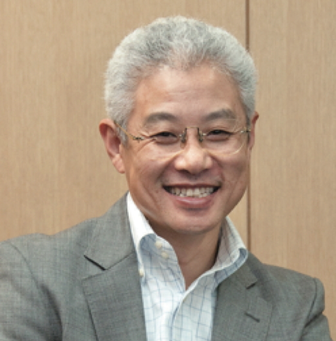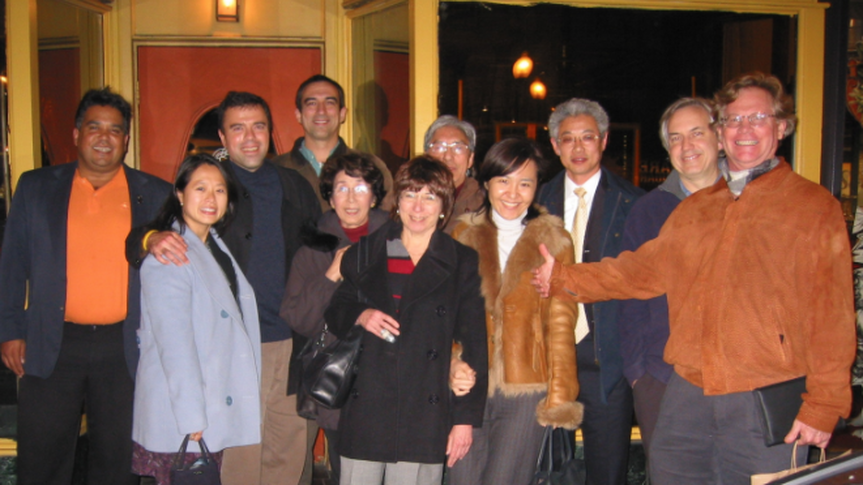|
BY GUEST AUTHOR R. ALLEN WAGGONER I had the honor of knowing Dr. Kang Cheng not only as a scientific colleague, but also as one of my closest friends for more than 20 years. He was the picture of health, so I was as stunned as everyone else when I learned that he has passed away suddenly at the age of 54. He left behind his wife, Professor Mariko Miyata, and their young son Kai.  Dr. Kang Cheng Dr. Kang Cheng Kang was born in Ningbo, China, in the province of Zhejiang, in 1962. He did not start out as a neuroscientist but graduated from Zhejiang University in 1983, with a B.A. in Geology. After graduating, Kang worked at the Chinese Academy of Sciences, Chengdu Institute of Geography for six years, doing image processing of satellite images. His work in image processing led to several opportunities to come to RIKEN (The Institute for Physical and Chemical Research, in Wako-shi Japan) for short visits. One of those visits was in a neuroscience lab, the Information Science Laboratory, headed by Dr. Keiji Tanaka. Dr. Tanaka offered Kang the opportunity to join the lab on a more permanent basis, if he was interested in becoming a neuroscientist. Kang accepted this offer and moved to Japan in 1989.  In the company of friends and colleagues at the 2005 Society for Neuroscience meeting in Washington DC (from left to right are Dr. Sean Marrett - NIH, Dr. Patricia Bandettini - NIH, Dr. Peter Bandettini - NIH, Dr. Afonso Silva - NIH, Mrs. Kazuko Ogawa, Dr. Leslie Ungerleider - NIH, Dr. Seiji Ogawa - Tohoku Fukushi University, Dr. Mariko Miyata - Tokyo Women's Medical University (Kang's wife), Dr. Kang Cheng - RIKEN-Brain Science Institute, Dr. Alan Koretsky - NIH, Dr. Roger Tootell - MGH) In the company of friends and colleagues at the 2005 Society for Neuroscience meeting in Washington DC (from left to right are Dr. Sean Marrett - NIH, Dr. Patricia Bandettini - NIH, Dr. Peter Bandettini - NIH, Dr. Afonso Silva - NIH, Mrs. Kazuko Ogawa, Dr. Leslie Ungerleider - NIH, Dr. Seiji Ogawa - Tohoku Fukushi University, Dr. Mariko Miyata - Tokyo Women's Medical University (Kang's wife), Dr. Kang Cheng - RIKEN-Brain Science Institute, Dr. Alan Koretsky - NIH, Dr. Roger Tootell - MGH) Kang's neuroscience career ranged from histology and electrophysiology studies, to PET and, eventually, fMRI. In essence he left behind a career of making maps from satellite images for a career that would eventually lead to making brain maps from MRI images. The very first neuroscience study that he coauthored was published in Nature, not a bad start to a scientific career. That paper was on columnar organization in the inferotemporal cortex and columnar organization in the brain proved to be one of the primary themes in his scientific career. In 1995, Kang received his Ph.D. from Osaka University Department of Biophysical Engineering. His dissertation was entitled "Studies of Extrastriate Visual Cortex of Primates" and included both electrophysiological studies in monkeys and PET studies in humans. These studies were carried out in Dr. Tanaka's lab. Kang stayed on in Dr. Tanaka's lab as a postdoc and when Dr. Tanaka received funding for a 4 Tesla MRI system in 1996, Kang became one of the primary members of the fMRI team within the lab. He spearheaded the effort to image cortical columns, which was and remains, a primary interest in the lab. His initial efforts lead to our 2001 Neuron paper on observing ocular dominance columns in humans, with fMRI. Ours was not the first paper reporting the observation of ocular dominance columns with fMRI, but many neuroscientists were skeptical of the earlier reports. In our paper, Kang described in detail many key methodological issues, such as the necessary shape of the Calcarine sulcus, the required slice orientation, and included illustrations of what the expected functional maps should look like if columns were successfully observed as well as when, for example, the slice orientation was not quite right. Kang's attention to detail won over the skeptics and this became the work for which Kang is best known. Neuroimaging studies lie at the intersection of a variety of scientific disciplines. Kang (a neuroscientist) and I (an MRI physicist) working together was an example of this. But Kang recognized the importance of each member in the team having a basic understanding of all the methods being brought together. He felt that no aspect of the experiment or the analysis should be viewed as a black box, and that without at least a basic understanding of the contributions each discipline brings to neuroscience, communication with scientists from the various disciplines is very difficult. Thus our collaboration over the years included many long conversations about recent advances in MRI technology, the details of the neuroscience questions we were trying to answer, and whether the methods we, or others, were employing were even capable of yielding answers these questions. This also meant that we would often require new postdocs arriving in the lab to attend lectures aimed at lifting the cover off the black boxes in their background. In 1997, RIKEN established the Brain Science Institute (BSI) and Dr. Tanaka's lab became one of the founding labs. In 2001, Kang was named Deputy Laboratory Head of the Laboratory for Cognitive Brain Mapping (the current name of Dr. Tanaka's lab). In 2006 Kang was named Head of the newly formed Support Unit for functional Magnetic Resonance Imaging. Kang continued to hold both appointments until the time of his passing. He was also an Adjunct Associate Professor in the Graduate School of Science and Engineering of Saitama University. Kang's life was not limited to science; during his years at RIKEN he helped organize intramural clubs for badminton, basketball, and soccer. He also enjoyed singing karaoke. In fact, in his early days at RIKEN, one of the main ways that he learned to both read and speak Japanese was by going to karaoke with his coworkers and learning to sing Japanese songs. At Kang's wedding reception, after prompting by several friends, he even gave an impromptu rendition of one of his favorite karaoke songs. He was also an avid photographer, and enjoyed filling the inboxes of his friends with pictures of conference dinners, his family having fun, or cherry blossoms in the spring. I first met Kang and Dr. Tanaka at the University of Western Ontario. They were visiting Ravi Menon's lab and invited me there to interview for an MRI physicist position in Dr. Tanaka's lab. Kang picked me up from the airport and since then (for the next 20 years) he always enjoyed telling people how nervous I was when we first met in the airport. From that beginning we became life-long friends and he was even a groomsman at my wedding. Kang was a good friend not only to those of us who worked closely with him, but to many in the neuroscience community as well. He will be sorely missed by all who knew him. Two memorial websites have been set up in Kang's honor: - One by his friends and colleagues at RIKEN: http://www.brain.riken.jp/labs/cbms/kchengmemorial.html - The other by his friends in the Overseas Chinese Society for Magnetic Resonance in Medicine: https://ocsmrm.wordpress.com/2016/11/13/memorial_to_prof_kang_cheng/
0 Comments
Your comment will be posted after it is approved.
Leave a Reply. |
BLOG HOME
Archives
January 2024
|
 RSS Feed
RSS Feed